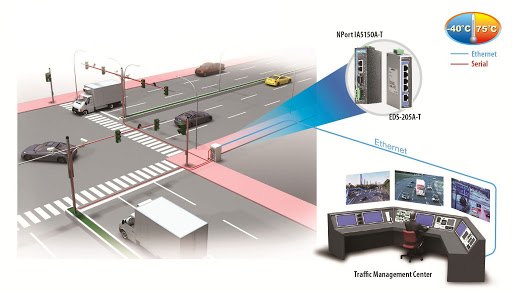Burdensome strain of traffic management that is imbibed on traffic cell personnel and traffic volunteers in State makes automation viable

Achieving complete automation of Road Traffic Management Systems represents the pinnacle of road traffic regulation in any State. These systems work on the principle of intuition based on artificial intelligence which analyse trends such as vehicular density on a stretch of road during peak hour traffic, and even factoring in the contours of the road in order to extrapolate probability of road crashes.
While human inputs are essentially redundant in these systems, the advanced rationalising and judgment skills of a human being would be indispensable in setting the parameters for these automation systems to work in a given regional setting.
The State of Goa always remains an innovative ground for testing and implementing new systems of governance and administration and the same is also true for road safety enhancement measures.
One such model piece of legislation in the Motor Vehicles Act, 1988 happens to be the newly inserted Section 136A which envisages: Electronic monitoring and enforcement of road safety, and which had been inserted by virtue of the Motor Vehicles (Amendment) Act, 2019.
In sum and substance: “Section 136A mandates that state governments ensure electronic monitoring and enforcement of road safety on national highways, state highways, and roads in urban areas with a population prescribed by the Central Government.” (Amisha Shrivastava, 2024).
The recent observations by a bench of Justice Abhay Oka and Justice Augustine George Masih described Section 136A as an innovative provision designed to help state governments ensure road discipline is followed. (LiveLaw, 2024).
In S.Rajaseekaran Vs. Union Of India And Ors. 2024 INSC 37, the hon’ble Supreme Court of India observed: “According to us Section 136A is a very innovative provision which will help all the state governments in ensuring that road discipline is followed and the provisions of MV Act and Rules are scrupulously followed.” (Justice Abhay S. Oka &. Justice Augustine George Masih)
In close consonance with Section 136-A of the M.V. Act, 1988, follows Rule 167A of the Central Motor Vehicles Rules, 1988 which specifies how to place electronic devices for road safety enforcement.
According to the Notification for Electronic Monitoring and Enforcement of Road Safety which was posted on 19 August, 2021 by Press Information Bureau, Delhi: The rules specify the detailed provisions for placement of electronic enforcement devices (speed camera, closed-circuit television camera, speed gun, body wearable camera, dashboard camera, Automatic Number Plate Recognition (ANPR), weigh in machine (WIM) and any such technology).
State Governments shall ensure that electronic enforcement devices are placed at high-risk and high-density corridors on National Highways and State Highways, and at critical junctions at least in major cities with more than one million population and also including the 132 cities as specified in the table given in the rules.
According to the Notification of the Ministry of Road Transport & Highways:
“Footage from an electronic enforcement device having electronic stamp for location, date and time, can be used to issue challan for the following offences:-
(i) not driving within the prescribed speed limit (sections 112 and 183);
(ii) stopping or parking vehicle at an unauthorised location (section 122);
(iii) not undertaking safety measures for drivers and pillion riders (section 128);
(iv) not wearing protective headgear or helmet (section 129);
(v) jumping a red light, violating a stop sign, using handheld communications devices while driving,… (section 184);
(vi) driving vehicle exceeding permissible weight (sub-section (1) of section 194);
(vii) driving without safety belt (section 194B);
(viii) contravention of rule 6 (pertaining to lane driving) of the Motor Vehicles (Driving) Regulations, 2017 (section 177A);
(ix) Goods carriage carrying passengers (section 66);
(x) contravention of rule 36 (pertaining to Registration plates) of the Motor Vehicles (Driving) Regulations, 2017 (section 177A);
(xi) driving vehicle with load that extends beyond the sides of body or to the front or to the rear or in height beyond the permissible limit (sub-section (1A) of section 194);
(xii) failure to provide free passage to emergency vehicle (section 194E)” (PIB, 2021).
Interestingly, the Supreme Court of India in S.Rajaseekaran Vs. Union Of India And Ors. (2024) has also endeavoured to pass directions upon another crucial get gruesome aspect pertaining to the aftermath of road crashes, particularly, the ‘hit and run’ cases.
“Directions will have to be issued regarding accompaniments of Form III appended to the Compensation to Victims of Hit and Run Motor Accidents Scheme, 2022 so that the General Insurance Corporation of India is able to make online transfer to the account of the persons held entitled to the compensation. The other issue which we have to consider is about cashless treatment to the victims of the road accidents.”
Hence, Goa as a state with a relatively high vehicular density in comparison to its low population would benefit greatly if Section 136A and Rule 167A of the Motor Vehicles Act, 1988 and the Rules, 1989, respectively would be implemented in the present moment rather than awaiting further dilapidation of its traffic management systems.
The main reason which makes the State of Goa viable for implementation of the traffic automation is because of the burdensome strain of traffic management that is imbibed on the traffic cell personnel and the traffic volunteers in the State.
In drawing away the precious resource of human intervention away from challaning of traffic offences and redirecting the same personnel towards road patrolling and traffic management at traffic bottlenecks, automation bears the potential to quickly and effectively equip the traffic cells with more manpower that is necessary for increased road presence in order to prevent road crashes and to respond to traffic jams quicker. And the importance of having additional presence of traffic cell personnel during the festive season cannot be highlighted enough, as they are the foot soldiers on the road who keep the veins of narrow Goan roads flowing with the revellers and the pious simultaneously.